Various - Birds Illustrated by Color Photography Vol 3. No 4.
Здесь есть возможность читать онлайн «Various - Birds Illustrated by Color Photography Vol 3. No 4.» — ознакомительный отрывок электронной книги совершенно бесплатно, а после прочтения отрывка купить полную версию. В некоторых случаях можно слушать аудио, скачать через торрент в формате fb2 и присутствует краткое содержание. Жанр: periodic, Биология, Природа и животные, foreign_edu, на английском языке. Описание произведения, (предисловие) а так же отзывы посетителей доступны на портале библиотеки ЛибКат.
- Название:Birds Illustrated by Color Photography Vol 3. No 4.
- Автор:
- Жанр:
- Год:неизвестен
- ISBN:нет данных
- Рейтинг книги:3 / 5. Голосов: 1
-
Избранное:Добавить в избранное
- Отзывы:
-
Ваша оценка:
- 60
- 1
- 2
- 3
- 4
- 5
Birds Illustrated by Color Photography Vol 3. No 4.: краткое содержание, описание и аннотация
Предлагаем к чтению аннотацию, описание, краткое содержание или предисловие (зависит от того, что написал сам автор книги «Birds Illustrated by Color Photography Vol 3. No 4.»). Если вы не нашли необходимую информацию о книге — напишите в комментариях, мы постараемся отыскать её.
Birds Illustrated by Color Photography Vol 3. No 4. — читать онлайн ознакомительный отрывок
Ниже представлен текст книги, разбитый по страницам. Система сохранения места последней прочитанной страницы, позволяет с удобством читать онлайн бесплатно книгу «Birds Illustrated by Color Photography Vol 3. No 4.», без необходимости каждый раз заново искать на чём Вы остановились. Поставьте закладку, и сможете в любой момент перейти на страницу, на которой закончили чтение.
Интервал:
Закладка:
Various
Birds Illustrated by Color Photography Vol 3. No 4
AVIARIES
AN admirer of birds recently said to us: "Much is said of the brilliant specimens which you have presented in your magazine, but I confess that they have not been the most attractive to me. Many birds of no special beauty of plumage seem to me far more interesting than those which have little more than bright colors and a pretty song to recommend them to the observer." He did not particularize, but a little reflection will readily account for the justness of his opinion. Many plain birds have characteristics which indicate considerable intelligence, and may be watched and studied with continued and increasing interest. To get sufficiently near to them in their native haunts for this purpose is seldom practicable, hence the limited knowledge of individual naturalists, who are often mere generalizers, and the necessity of the accumulated knowledge of many patient students. In an aviary of sufficient size, in which there is little or no interference with the natural habits of the birds, a vast number of interesting facts may be obtained, and the birds themselves suffer no harm, but are rather protected from it. Such an aviary is that of Mr. J. W. Sefton, of San Diego, California. In a recent letter Mrs. Sefton pleasantly writes of it for the benefit of readers of Birds. She says:
"My aviary is out in the grounds of our home. It is built almost entirely of wire, protected only on the north and west by an open shed, under which the birds sleep, build their nests and gather during the rains which we occasionally have throughout the winter months. The building is forty feet long, twenty feet wide, and at the center of the arch is seventeen feet high. Running water trickles over rocks, affording the birds the opportunity of bathing as they desire. There are forty-seven varieties of birds and about four hundred specimens. The varieties include a great many whose pictures have appeared in Birds: Quail, Partridge, Doves, Skylarks, Starlings, Bobolinks, Robins, Blackbirds, Buntings, Grosbeaks, Blue Mountain Lory, Cockateel, Rosellas, Grass Parrakeet, Java Sparrows, Canaries, Nonpariels, Nightingales, Cardinals of North and South America, and a large number of rare foreign Finches, indeed nearly every country of the world has a representative in the aviary.
"We have hollow trees in which the birds of the Parrot family set up housekeeping. They lay their eggs on the bottom of the hole, make no pretention of building a nest, and sit three weeks. The young birds are nearly as large as the parents, and are fully feathered and colored when they crawl out of the home nest. We have been very successful, raising two broods of Cockateel and one of Rosellas last season. They lay from four to six round white eggs. We have a number of Bob White and California Quail. Last season one pair of Bob Whites decided to go to housekeeping in some brush in a corner, and the hen laid twenty-three eggs, while another pair made their nest in the opposite corner and the hen laid nine eggs. After sitting two weeks the hen with the nine eggs abandoned her nest, when the male took her place upon the eggs, only leaving them for food and water, and finally brought out six babies, two days after the other hen hatched twenty-three little ones. For six days the six followed the lone cock around the aviary, when three of them left him and went over to the others. A few days later another little fellow abandoned him and took up with a California Quail hen. The next day the poor fellow was alone, every chick having deserted him. The last little one remained with his adopted mother over two weeks, but at last he too went with the crowd. These birds seemed just as happy as though they were unconfined to the limits of an aviary.
"We have had this aviary over two years and have raised a large number of birds. All are healthy and happy, although they are out in the open both day and night all the year round. Many persons, observant of the happiness and security of our family of birds, have brought us their pets for safe-keeping, being unwilling, after seeing the freedom which our birds enjoy, to keep them longer confined in small cages.
"Around the fountain are calla lillies, flags, and other growing plants, small trees are scattered about, and the merry whistles and sweet songs testify to the perfect contentment of this happy family."
Yes, these birds are happy in such confinement. They are actually deprived of nothing but the opportunity to migrate. They have abundance of food, are protected from predatory animals, Hawks, conscienceless hunters, small boys, and nature herself, who destroys more of them than all other instrumentalities combined. Under the snow lie the bodies of hundreds of frozen birds whenever the winter has seemed unkind. A walk in the park, just after the thaw in early March, revealed to us the remorselessness of winter. They have no defense against the icy blast of a severe season. And yet, how many escape its ruthlessness. On the first day of March we saw a white-breasted Sparrow standing on the crust of snow by the roadside. When we came up close to it it flew a few yards and alighted. As we again approached, thinking to catch it, and extending our hand for the purpose, it flew farther away, on apparently feeble wing. It was in need of food. The whole earth seemed covered with snow, and where food might be found was the problem the poor Sparrow was no doubt considering.
Yes, the birds are happy when nature is bountiful. And they are none the less happy when man provides for them with humane tenderness. For two years we devoted a large room – which we never thought of calling an aviary – to the exclusive use of a beautiful pair of Hartz mountain Canaries. In that short time they increased to the number of more than three dozen. All were healthy; many of them sang with ecstacy, especially when the sun shone brightly; in the warmth of the sun they would lie with wings raised and seem to fairly revel in it; they would bathe once every day, sometimes twice, and, like the English Sparrows and the barnyard fowl, they would wallow in dry sand provided for them; they would recognize a call note and become attentive to its meaning, take a seed from the hand or the lips, derive infinite pleasure from any vegetable food of which they had long been deprived; if a Sparrow Hawk, which they seemed to see instantly, appeared at a great height they hastily took refuge in the darkest corner of the room, venturing to the windows only after all danger seemed past; at the first glimmering of dawn they twittered, preened, and sang a prodigious welcome to the morn, and as the evening shades began to appear they became as silent as midnight and put their little heads away under their delicate yellow wings.
Charles C. Marble.FOREIGN SONG BIRDS IN OREGON
IN 1889 and 1892 the German Song Bird Society of Oregon introduced there 400 pairs of the following species of German song birds, to-wit: Song Thrushes, Black Thrushes, Skylarks, Woodlarks, Goldfinches, Chaffinches, Ziskins, Greenfinches, Bullfinches, Grossbeaks, Black Starlings, Robin Redbreasts, Linnets, Singing Quails, Goldhammers, Linnets, Forest Finches, and the plain and black headed Nightingales. The funds for defraying the cost of importation and other incidental expenses, and for the keeping of the birds through the winter, were subscribed by the citizens of Portland and other localities in Oregon. To import the first lot cost about $1,400. After the birds were received they were placed on exhibition at the Exposition building for some days, and about $400 was realized, which was applied toward the expense. Subsequently all the birds, with the exception of the Sky and Wood Larks, were liberated near the City Park. The latter birds were turned loose about the fields in the Willamette Valley.
Читать дальшеИнтервал:
Закладка:
Похожие книги на «Birds Illustrated by Color Photography Vol 3. No 4.»
Представляем Вашему вниманию похожие книги на «Birds Illustrated by Color Photography Vol 3. No 4.» списком для выбора. Мы отобрали схожую по названию и смыслу литературу в надежде предоставить читателям больше вариантов отыскать новые, интересные, ещё непрочитанные произведения.
Обсуждение, отзывы о книге «Birds Illustrated by Color Photography Vol 3. No 4.» и просто собственные мнения читателей. Оставьте ваши комментарии, напишите, что Вы думаете о произведении, его смысле или главных героях. Укажите что конкретно понравилось, а что нет, и почему Вы так считаете.
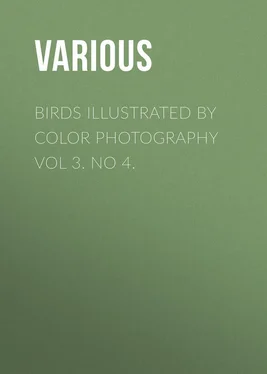



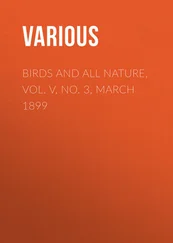
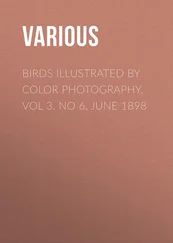
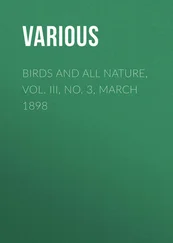
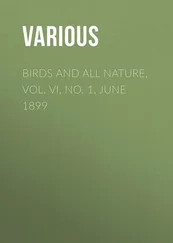
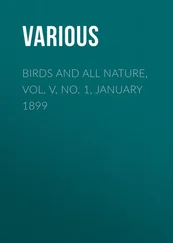

![Various - Birds Illustrated by Color Photography [January, 1898]](/books/746296/various-birds-illustrated-by-color-photography-ja-thumb.webp)

![Various - Birds Illustrated by Color Photography [February, 1898]](/books/746443/various-birds-illustrated-by-color-photography-fe-thumb.webp)